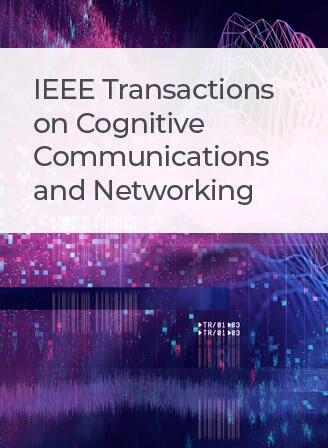通过预测器辅助 NSGA-III 实现高效神经网络,用于物联网异常流量检测
IF 7.4
1区 计算机科学
Q1 TELECOMMUNICATIONS
IEEE Transactions on Cognitive Communications and Networking
Pub Date : 2024-01-18
DOI:10.1109/TCCN.2024.3355433
引用次数: 0
摘要
边缘计算通过将其覆盖范围扩展到较小的物联网(IoT)设备和边缘节点,提高了入侵检测的实时性和数据私密性。然而,由于边缘节点的处理能力和存储能力有限,迫切需要具有高检测精度的轻量级模型。基于多目标遗传算法的神经架构搜索(NAS)技术可以同时兼顾模型的复杂性和性能,从而自动设计出快速准确的检测模型。然而,NAS 需要在优化过程中从头开始训练每个模型,以获得其检测准确性作为适应性评价标准之一。针对这一局限性,我们提出了一种高效的预测辅助 NSGA-III 算法。该算法使用代理模型来快速预测架构的准确性,从而省去了完整的训练过程,大大提高了优化效率。此外,我们还设计了一个创新的搜索空间,可以减少模型内部通道和输出特征图的维度,从而创建对分类性能影响最小的轻量级模型。通过在 UNSW-NB15 数据集上搜索具有竞争力的 F1 分数为 95.17%、FLOP 为 38.10 MB 的较窄帕累托最优模型,验证了所提出的方法。通过添加预测器,每次迭代的优化次数增加,从而加快了收敛速度。此外,在最复杂的结构(7 个单元)中,比较我们设计前后的搜索空间,模型的分类错误率从 4.31% 增加到 4.36%,而 FLOP 从 271.13MB 减少到 186.9MB。本文章由计算机程序翻译,如有差异,请以英文原文为准。
Toward Efficient Neural Networks Through Predictor-Assisted NSGA-III for Anomaly Traffic Detection of IoT
Edge computing enhances intrusion detection by extending its reach to smaller Internet of Things (IoT) devices and edge nodes, improving real-time detection and data privacy. However, due to the limited processing power and storage of edge nodes, lightweight models with high detection accuracy are urgently needed. The Neural Architecture Search (NAS) technique based on multi-objective genetic algorithms can simultaneously balance model complexity and performance, thus automatically designing models for fast and accurate detection. However, NAS requires training each model from scratch during the optimization process to obtain its detection accuracy as one of the fitness evaluation criteria. To address this limitation, we propose an efficient predictor-assisted NSGA-III algorithm. It uses proxy models to swiftly predict architecture accuracy, eliminating the need for complete training and greatly improving optimization efficiency. Furthermore, we have designed an innovative search space that allows for the reduction of internal channels and output feature map dimensions within the model, resulting in the creation of lightweight models with minimal impact on classification performance. The proposed method is validated by searching a narrower Pareto-optimal model of the competitive F1 score of 95.17% with 38.10 MB FLOPs on the UNSW-NB15 dataset. By adding a predictor, the number of optimizations per iteration increased, leading to faster convergence. Additionally, when comparing the search spaces before and after our design in the most complex structure (with 7 cells), the model’s classification error rate increased from 4.31% to 4.36%, while the FLOPs decreased from 271.13MB to 186.9MB.
求助全文
通过发布文献求助,成功后即可免费获取论文全文。
去求助
来源期刊

IEEE Transactions on Cognitive Communications and Networking
Computer Science-Artificial Intelligence
CiteScore
15.50
自引率
7.00%
发文量
108
期刊介绍:
The IEEE Transactions on Cognitive Communications and Networking (TCCN) aims to publish high-quality manuscripts that push the boundaries of cognitive communications and networking research. Cognitive, in this context, refers to the application of perception, learning, reasoning, memory, and adaptive approaches in communication system design. The transactions welcome submissions that explore various aspects of cognitive communications and networks, focusing on innovative and holistic approaches to complex system design. Key topics covered include architecture, protocols, cross-layer design, and cognition cycle design for cognitive networks. Additionally, research on machine learning, artificial intelligence, end-to-end and distributed intelligence, software-defined networking, cognitive radios, spectrum sharing, and security and privacy issues in cognitive networks are of interest. The publication also encourages papers addressing novel services and applications enabled by these cognitive concepts.
 求助内容:
求助内容: 应助结果提醒方式:
应助结果提醒方式:


